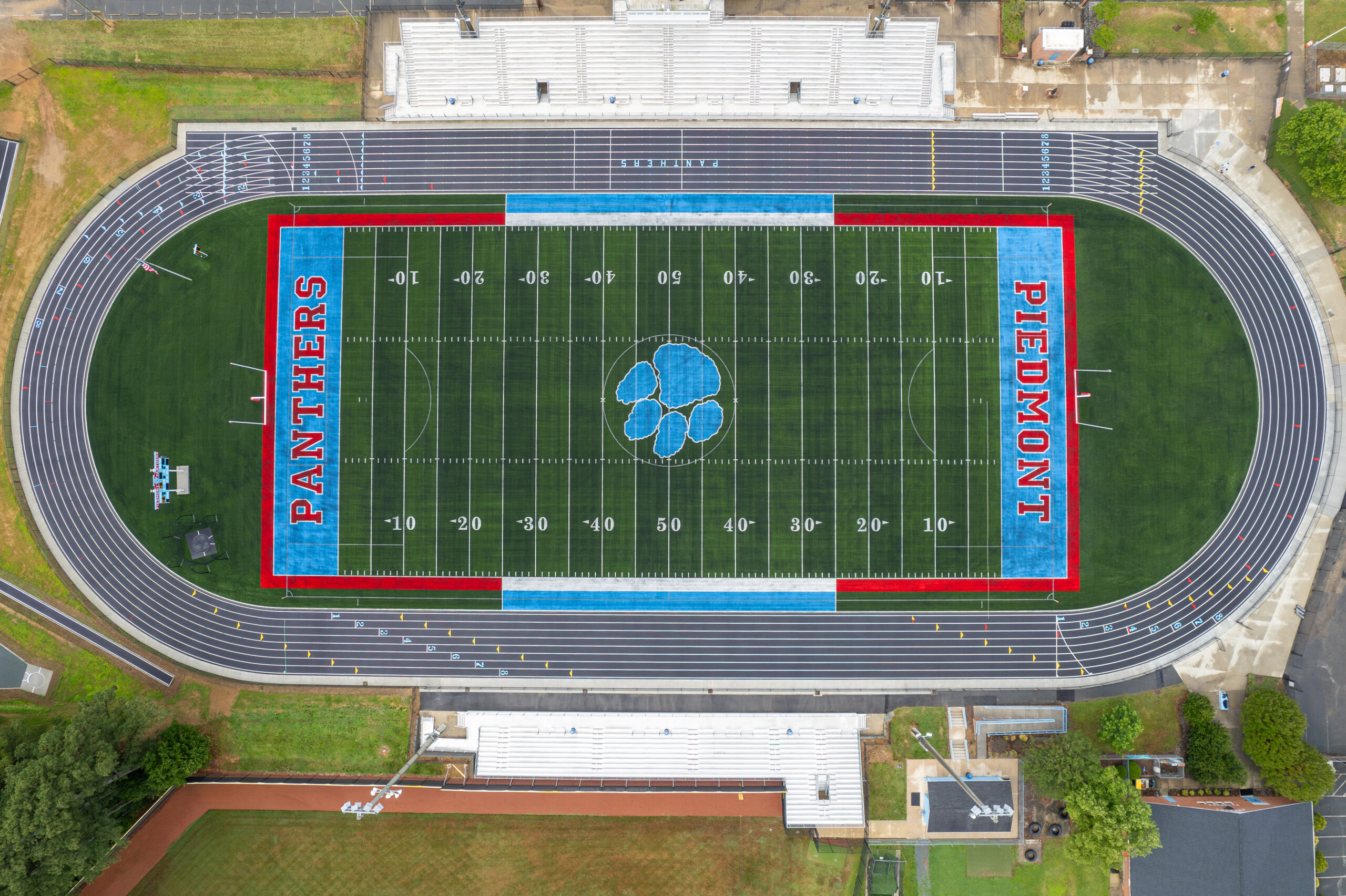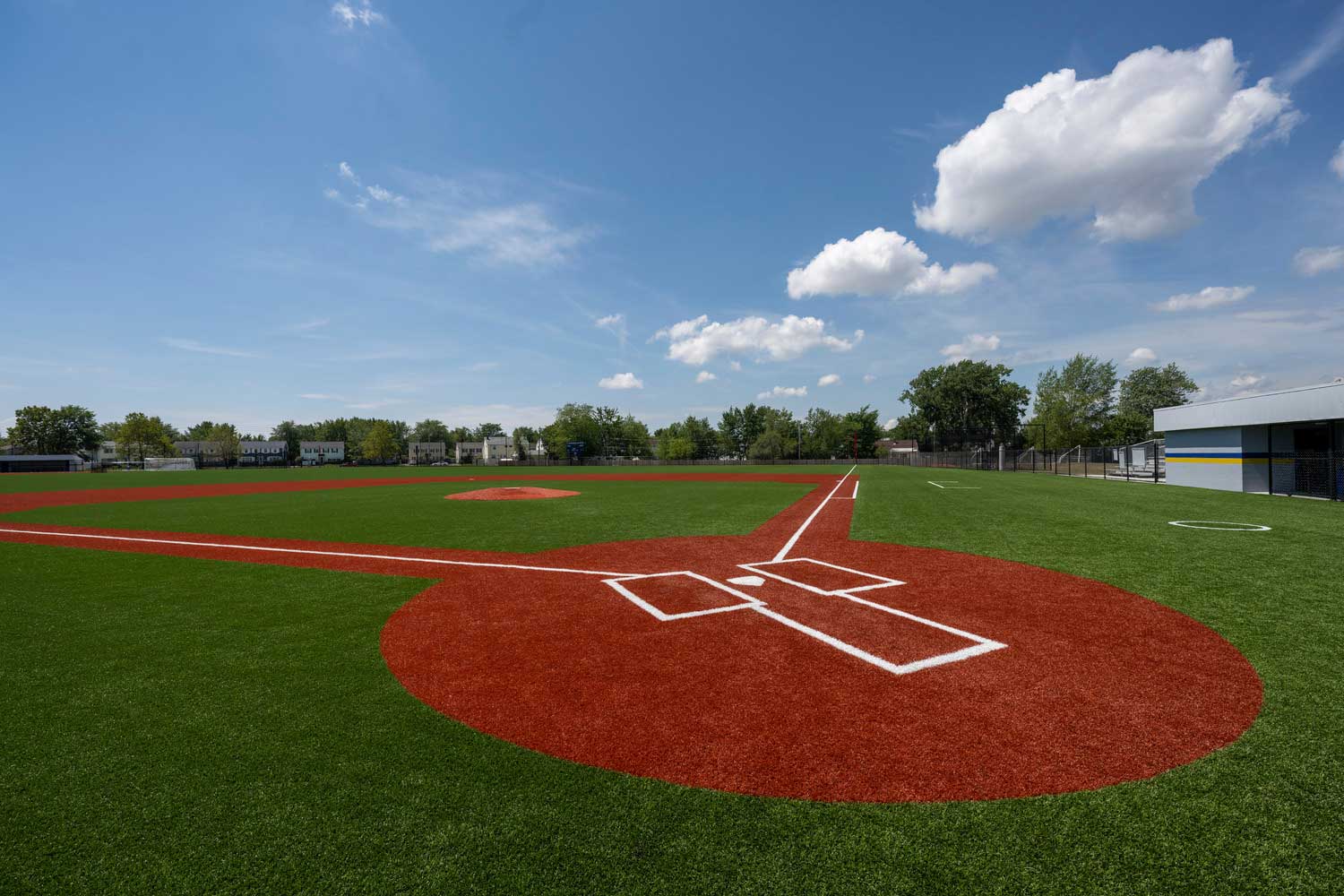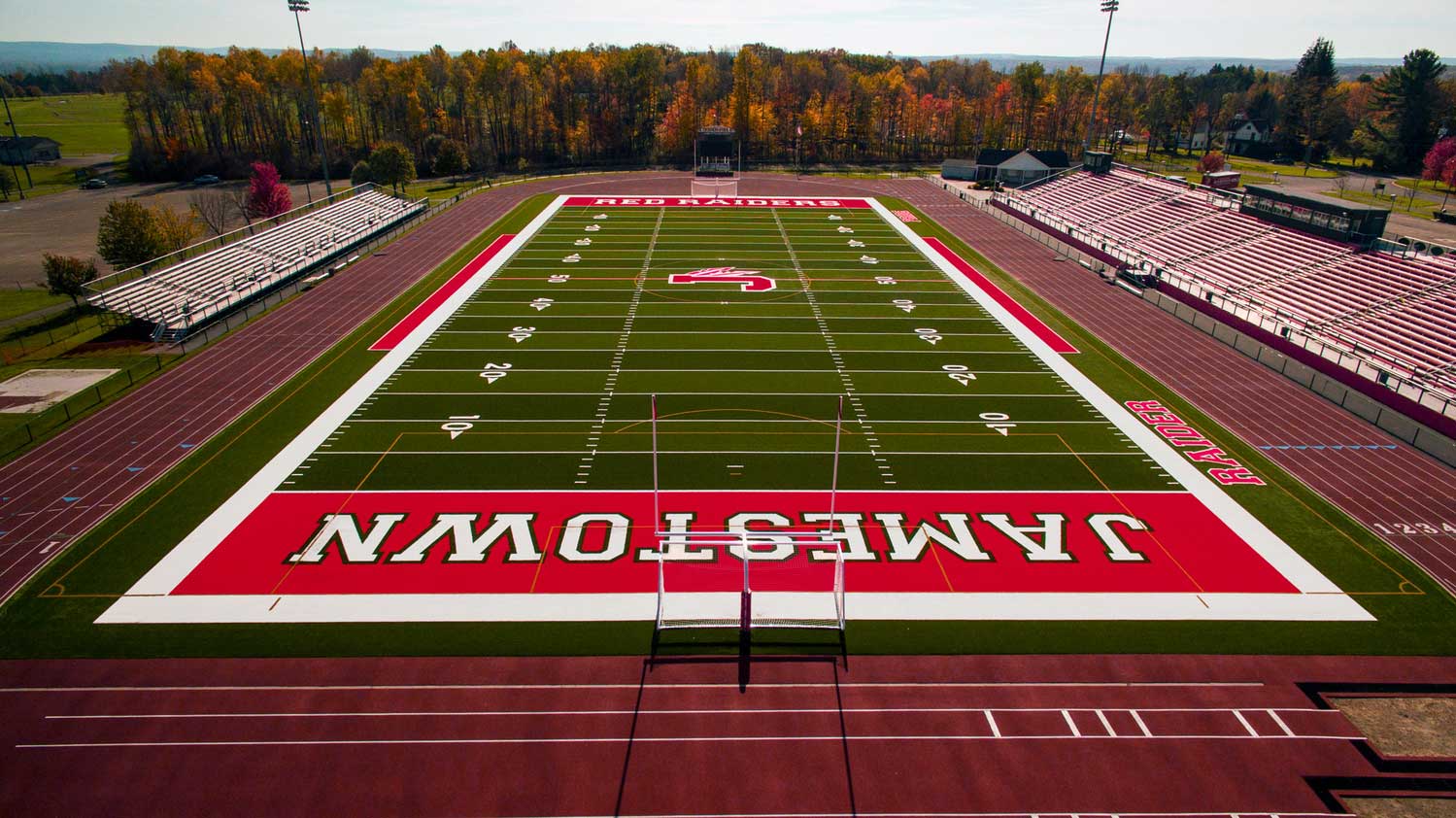Modern synthetic fields offer game-changing benefits that are simply too compelling to overlook.
The evolution of this advanced “grass” has revolutionized our sporting landscapes. Through continuous improvements in composition and materials, synthetic fields now boast enhanced aesthetics, improved tactile experience, and heightened usability. These advancements have fueled a surge in demand for such surfaces, particularly within K-12 school districts.
Greater Playability
Unlike expansive college campuses, K-12 schools often contend with limited space for sports facilities. Despite this constraint, there’s a strong desire to provide students with diverse athletic opportunities. Unlike natural fields, which deteriorate with frequent use, durable artificial turf facilitates continuous play, accommodating multiple sports without succumbing to wear and tear.

YEAR-ROUND UTILITY
All-weather synthetic surfaces extend playing seasons, particularly in regions prone to cold or wet conditions. Where traditional fields might succumb to rain, snow, or ice, synthetic turf remains resilient. It can be easily cleared of snow and efficiently drained, ensuring that sporting events proceed on schedule, regardless of weather conditions.

PRIORITIZING SAFETY
Natural grass fields are susceptible to wear and tear, resulting in uneven surfaces that pose injury risks. Additionally, weather-related hazards such as standing water, ice, or mud further compromise safety. Engineered turf eliminates these concerns, offering a consistently safe playing surface. Furthermore, turf construction facilitates precise impact attenuation measurements, ensuring optimal safety standards.

Economic EFFICIENCY
The maintenance of natural sod entails substantial costs, including watering, mowing, seeding, fertilizing, and drainage repairs. In contrast, artificial grass requires minimal upkeep, typically limited to an annual grooming. This significantly reduces maintenance expenses, making synthetic fields a cost-effective long-term investment, with an average lifespan of 10-12 years.

AESTHETIC APPEAL
Synthetic fields can be customized with pre-striping, school branding, and vibrant color options, creating visually striking sports facilities that ignite school spirit.
Modern turf fields represent a compelling solution for school athletics, offering a blend of beauty, safety, and cost-effectiveness. With their minimal maintenance requirements and capacity to instill pride, synthetic turf ensures that every school and student can enjoy a superior athletic experience.

